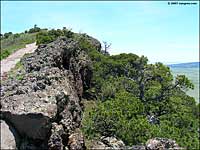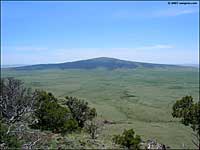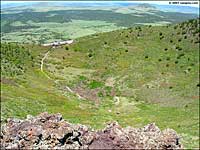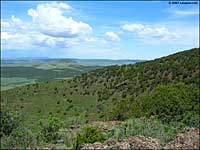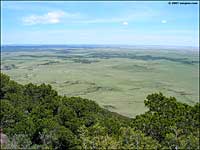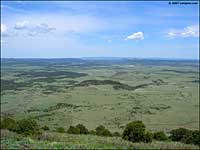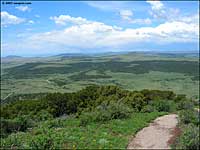
Capulin Volcano National Monument
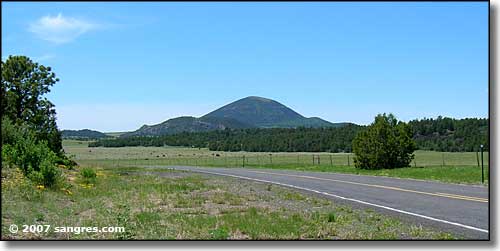
Capulin Volcano from the north
The symmetry of Capulin Volcano was preserved because lava did not flow from the main crater but from secondary vents located at the western base of the cone. After the eruptions ceased, vegetation gained a foothold on the steep, unstable slopes and, in time, the mountain became stabilized as dense root growth and the forces of nature changed the volcanic matter into soil. Today, the volcano is part grassland and part piñon, ponderosa and juniper forest. Throughout the park, shrubs such as mountain mahogany, chokecherry (capulin means chokecherry), Gambel oak, and squawbush are also found. Besides the flora and fauna, on a clear day you can see 3 other states from the highest point on the Crater Rim Trail.
The Crater Rim Trail rises about 300 feet above the parking area as it winds its way for one mile around the crater rim. While the whole path is paved, there are some relatively steep sections. The Park Service has thoughtfully set some nice benches and a few educational plaques along the way. At the highest point on the trail, there are three large placards that also let you know what you are looking at.
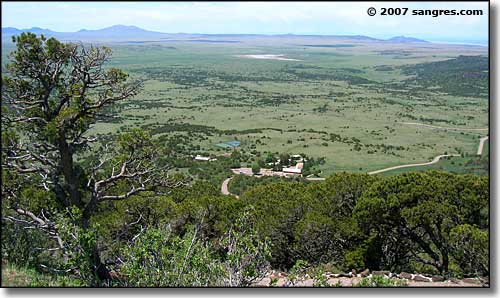
Looking down on the visitor center from the rim
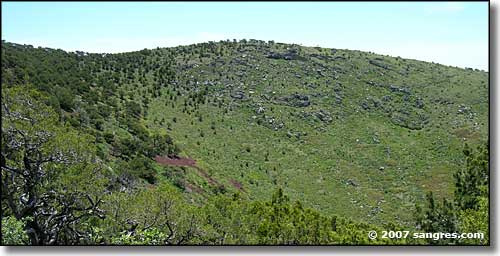
Looking back across the crater
To return, use the Back button in your browser.


